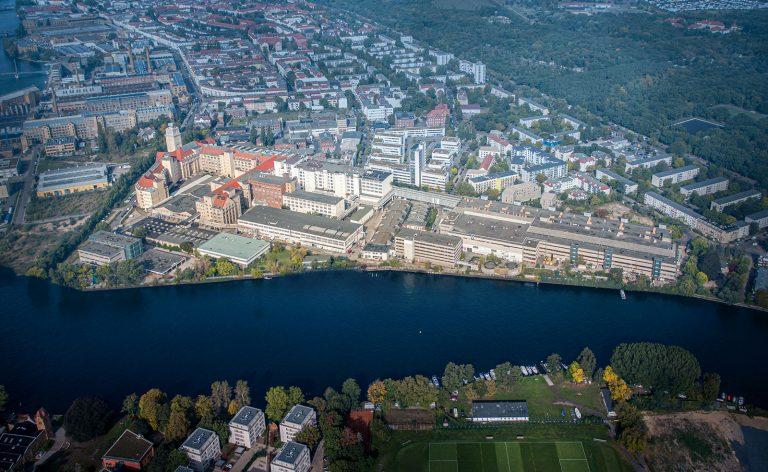Concept:
Self-sufficient energy supply
and unique quality of stay
Concept
The urban quarter of the future
A newly conceived world for work, research and education, accompanied by comprehensive social offerings for culture, leisure and gastronomy.
Urban development
A vibrant neighborhood for Berlin 2030
The area will be transformed from a former industrial site into a new social, cultural and infrastructurally complementary living environment for Oberschöneweide. The BE-U is to be accessible to the public at all times.
Energy concept
As self-sufficient as possible
Using the latest technologies and in close partnership with GASAG Solution Plus, innovative solutions for the energy supply of the future are created at BE-U.
Recycling economy
Self-sufficiency everywhere possible
At all levels of the BE-U | Behrens-Ufer, the goal is to achieve the greatest possible self-sufficiency. This is to be achieved through various circulation systems that generate, use and recycle resources and recyclables generated during production on site.
Social
Focus on people
After more than 100 years, residents and visitors will now have a valuable living environment here directly on the Spree for the first time. At BE-U | Behrens-Ufer, a new social hub is being created in Oberschöneweide – for everyone.
Participation
BE-U innovation LABs
The ambitious vision of BE-U | Behrens-Ufer requires expert knowledge in many different areas.
ESG
Sustainability in action
The development and operation of a sustainable and thus future-proof commercial city district only works in a triad of E, S and G.
Gastronomy
Pure pleasure – The new gastronomy
Whether it’s a healthy midday snack or a high-class menu, the gastronomic scene at BE-U | Behrens-Ufer takes up the sustainable, self-sufficient guiding principle of the neighborhood in a holistic gastronomic concept.
Concept
The urban quarter of the future
Urban development
A vibrant neighborhood for Berlin 2030
Energy concept
As self-sufficient as possible
Recycling economy
Self-sufficiency everywhere possible
Social
Focus on people
Participation
BE-U innovation LABs
ESG
Sustainability in action
Gastronomy
Pure pleasure – The new gastronomy
The vision of the BE-U
BE-U | Behrens-Ufer is to become a sustainable, liveable urban quarter with an international benchmark. The consistently sustainable concept – both as a commercial location and as a space for community – focuses on the needs of people and on sustainable energy solutions and comprehensive recycling management. By bringing together science and entrepreneurship, education and innovation in a human-centred, culture-enhancing place, Behrens-Ufer will meet the socio-ecological challenges of the future.




Robert Sprajcar, CEO of DIEAG
Urban development:
A dynamic neighbourhood for Berlin 2030
The overall urban development concept, which has already been agreed upon in collaboration with the district of Treptow-Köpenick, envisages a mixture of listed existing buildings and modern new construction with individual striking high points, new passageways and public squares, as well as the creation of a continuous riverbank promenade along the Spree.
The area is being transformed from a former industrial site into a new social, cultural and infrastructurally complementary living environment for Oberschöneweide. The BE-U is to be accessible to the public at all times. In the design of the quarter, the opening of the visual axes to the Spree and the wide promenade directly on the Spree emphasise the open, inviting concept.
Energy:
As self-sufficient as possible
Using the latest technologies and in close partnership with GASAG Solution Plus, innovative solutions are being developed at BE-U for the energy supply of the future. Energy is generated directly on the site in consistently sustainable production. The BE-U will thus offer the greatest possible energy self-sufficiency and security of supply for production, research and development in the future.
This sustainable energy supply is also made possible by the highly efficient construction of the BE-U buildings. In addition to smart building technology, technologies such as water-bearing clay ceilings in sustainable timber constructions will be used.
Die am BE-U
verwendeten
Technologien
Solarenergie
Wärmepumpen
Eisspeicher
Kaltnetz
Vertical Farming
Weitere Energiequellen in Untersuchung
Recycling economy:
Self-sufficiency
everywhere possible
At all levels of the BE-U | Behrens-Ufer, the aim is to be as self-sufficient as possible. This is to be achieved through various closed-loop systems that produce, use and recycle resources and valuable materials generated during production on site.
Examples of this are food production in vertical farming systems, rainwater storage and utilisation or thermal recycling.
The raw material cycles of the resident companies are harmonised for mutual benefit and in the sense of regenerative and sustainable economic activity. A stringent orientation of the tenants and concepts for gastronomy and leisure to implement this district-wide circular economy is ensured from the very beginning.
Social:
Focus on people
After more than 100 years, residents and visitors will now for the first time have a valuable living environment here directly on the Spree. At BE-U | Behrens-Ufer, a new social hub is being created in Oberschöneweide – for everyone.
A variety of catering concepts and offers for leisure, recreation and health are being created on the entire site and especially along the wide riverside promenade. The roof gardens and green open spaces of the BE-U are freely accessible to the public.
Social facilities such as a school and kindergarten on the site and the neighbourhood’s further educational opportunities underline the BE-U’s people-centred vision.
Participation:
Finding and implementing the solutions for tomorrow together
The ambitious vision of the BE-U | Behrens-Ufer requires expert knowledge in many different areas. Therefore, working groups on the various topics of the concept are active at the BE-U, which, staffed with international experts among others, find innovative and sensible solutions and guarantee the constant further development of existing systems in the future.
These working groups will be successively expanded in the coming years and, in addition to energy and construction topics, will also deal with social and cultural issues.
ESG:
Sustainability in action
Our guiding principle for sustainable investment in the future is based on a CO2-neutral and energy-autonomous commercial city district that functions as a lively recreational space for users, residents and visitors alike. In this way, ecological, social and economic aspects of sustainability merge at BE-U to create a sustainable place to work and live.
On the ecological level, the focus is on resource-saving construction methods, innovative building technologies for energy saving and the use of renewable energies, an integrated recycling concept and water management, among other things. an integrated recycling concept and water management.
The focus is on people – this guiding principle of the BE-U is emphasized by the high recreational and leisure value in the neighborhood and an enhanced quality of life for the entire district. In addition to the promotion of art and cultural institutions as well as associations, the BE-U promotes the compatibility of family and career and strengthens the health of users and visitors through the integration of health-related services.
On the economic level, the internationally recognized ESG guidelines on sustainable investment strategies ensure the economic viability of the BE-U.
Gastronomy:
Hotspot for Sustainable Enjoyment
In a unique blend of technology, science, art, and culture, the BE‑U | Behrens-Ufer district unveils an inspiring platform for culinary experiences, emerging as a fresh hotspot for sustainable enjoyment. Immerse yourself in the vibrant ambiance of this locale and explore a diverse array of gastronomic offerings.
BE‑U | Behrens-Ufer offers not only space for businesses but also for creatives and visionaries to realize their ideas. Immerse yourself in the exceptional atmosphere crafted by innovative international companies and relish the picturesque setting along the Spree. The 600-meter-long waterfront promenade and our verdant rooftop gardens beckon visitors to unwind from the hustle and bustle of daily life.
Discover a gastronomic scene that not only delivers delectable cuisine but also prioritizes sustainability and innovation. Our gastronomy initiative at BE‑U | Behrens-Ufer is dedicated to establishing a new benchmark for sustainable gastronomy. Collaborating with esteemed companies, we are fostering a distinctive community that draws visitors from around the globe.



